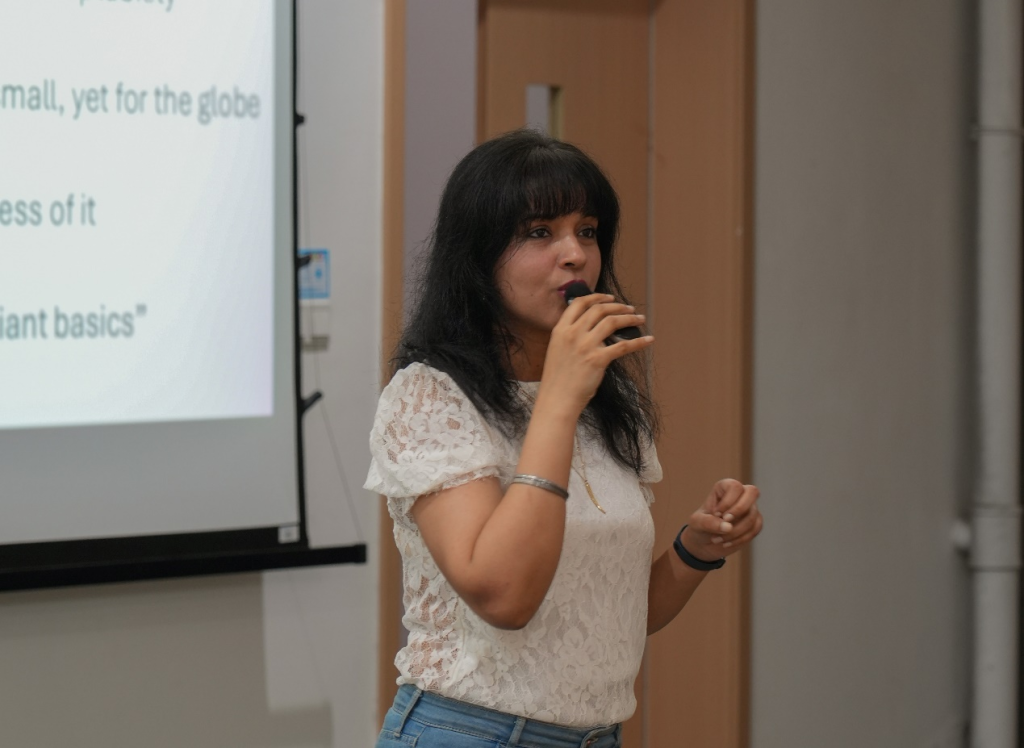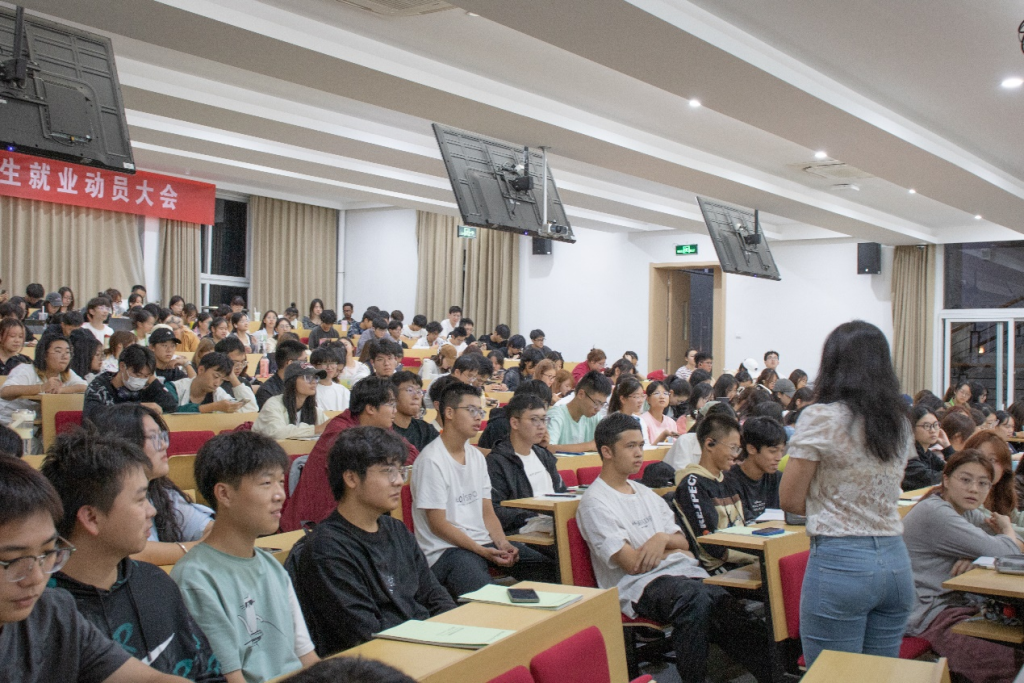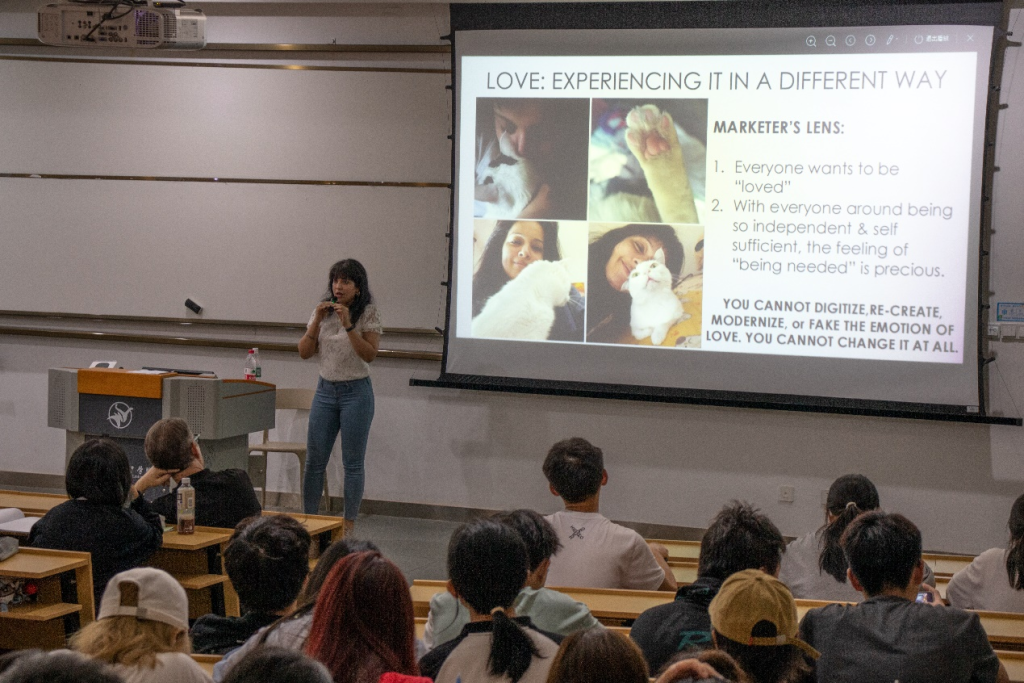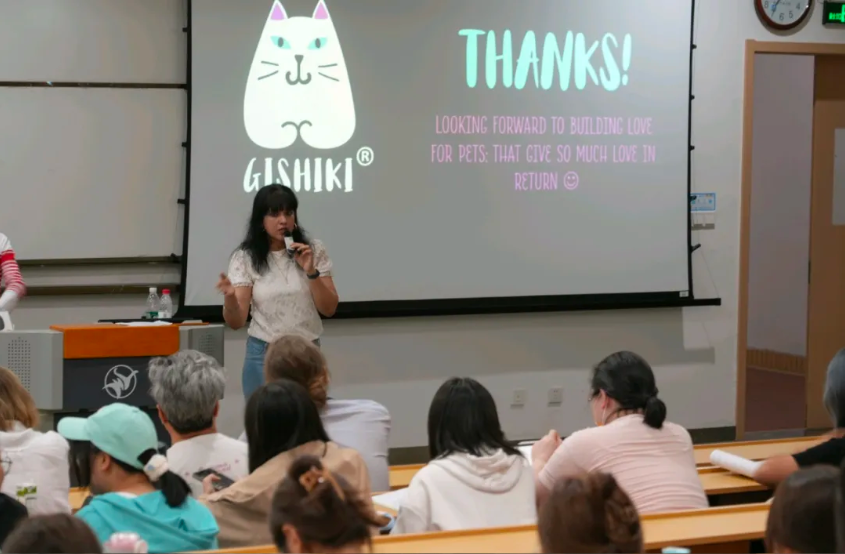
Editor's Notes:
In the era of globalization, digitalization and rapid development of intelligence, brand innovation has become a key factor in the sustainable development of enterprises. Whether it is product design, packaging innovation, marketing strategy or business model, domestic and foreign brands are constantly exploring and iterating to adapt to the rapid changes in market demand and consumer preferences. Sino-German Department of Branding offers a series of lectures on "International Design and Innovation Trends", inviting branding experts and scholars from the industry and academia to share the latest developments, methods and cases of international branding innovation, in order to inspire teachers and students to think innovatively and improve the level of branding discipline construction.
In the evening of October 17th, the Sino-German Branding School held a lecture series on "International Brand Innovation", inviting Harmeet Kaur to give a lecture on the topic of "Building and Strategic Management of Branding Agency" to all the students and teachers. Harmeet Kaur was invited to give a lecture on "Building and Strategic Management of Branding Agency" to all students and teachers.)
Presenter Introduction

Harmeet Kaur, Senior Brand Strategist and Entrepreneur. Has over 16 years of experience in brand development and innovation. She has earned an MBA in Marketing from SCMHRD and has provided brand management services to a number of Fortune 500 companies across food, personal and home care categories. Harmeet Kaur has held several key positions in these leading companies and is currently the Founder and CEO of A1ternative-Brands, a brand strategy consulting firm based in Shanghai, China, which is launching its pet product brand, GISHIKI®, in 2024.
Setting clear goals: self-awareness and self-development
The lecture was thrown in Harmeet Kaur's "What goals should we set in this day and age?" kicked off with a question, which she explained in a profound and detailed way. She believed that students should fully understand themselves, identify their interests and strengths, and find out what they are good at. By sharing her own rich life experiences and valuable "first" attempts, Harmeet encouraged students to be brave and learn from their experiences, so that they can learn to communicate more effectively in cross-cultural learning and lay a solid foundation for greater achievements in the future.

Intercultural Corporate Work: Learning Paths and Strengths to Leverage
Harmeet Kaur highlightedThe Importance of Learning in Cross-Cultural Corporate WorkShe pointed out that learning is the first step in intercultural communication and the key to personal growth and professional development. Cross-cultural workers need to have a deep understanding of their work environment and cultural background, and adapt and integrate into the new cultural environment through continuous learning. This learning not only includes the understanding of the local language, culture and customs, but also involves an in-depth understanding of the local market, consumer needs and industry dynamics. Through learning, cross-cultural workers can better utilize their own strengths and find their own position in the team, thus enhancing work efficiency and teamwork.

Valuing the Power of Teams: Practicing Collaboration and Growing with Humility
In his lecture, Harmeet Kaur emphasized the importance ofThe Importance of Team Practice and Collaboration.She believes that all achievements are made with the support and collaboration of the team. She mentioned that "we have to keep a humble attitude, which helps to improve our personal ability". At the same time, she also shared some valuable experiences about teamwork, such as how to integrate into the team quickly and how to communicate with team members effectively.

Intercultural Communication: Wisdom Strategies and Experience Sharing
Integration of their own life, study and work experiences, Harmeet Kaur offers students some advice on intercultural communication:
1. Acceptance of different modes of communication and rapid adaptation to different rhythms of life and work;
2. To solve all kinds of problems encountered in the workplace in a flexible manner and to face the change of identity with a positive mindset;
3. Understanding others and respecting individual differences;
4. Learn techniques for rapid ice-breaking in cross-cultural teams to create a dynamic team atmosphere.

Brand Building Case: GISHIKI's Successful Revelation
Harmeet Kaur used the example of her own successful pet supply brand, GISHIKI, to show the students the core elements of the brand building process. She pointed out thatBrand building is not just a simple naming and logo design process, but requires in-depth thinking and fine-tuning from multiple dimensions.Harmeet Kaur shares that in the early days of the GISHIKI brand, she was acutely aware of the need for nuanced insights into economic trends and accurate product segmentation. She used detailed data modeling to predict the brand's growth prospects and accordingly set a clear and practical direction. This data-based decision-making approach has enabled the GISHIKI brand to maintain a steady pace amidst fierce market competition and gradually build up its market position and brand influence.
In addition, Harmeet Kaur emphasized the importance ofThe importance of emotional resonance in brand storytelling.She believes that a good brand should be able to touch the hearts of consumers and create a strong emotional connection with them. Therefore, in the process of shaping the GISHIKI brand, she injected unique brand concepts and values, and conveyed these concepts through product design and marketing strategies, so as to establish a deep emotional bond with consumers.The successful case of the GISHIKI brand not only provides students with valuable practical experience, but also inspires them to think deeply about brand building and actively explore it.

Q&A session: How to accurately grasp consumer needs
At the end of the lecture, students actively asked questions, among them about "How to Understand Consumer Needs"Harmeet Kaur responded to this question with an enlightening answer to a question that has generated a great deal of interest. She emphasized thatUnderstanding consumer needs is the foundation of brand building and marketing strategy development.In order to accurately grasp consumer demand, we need to flexibly utilize the resources at hand, such as search engines and shopping platforms, to find data that can be used as support and utilize them, as well as to discover trends and changes in consumer demand through data analysis and mining techniques. At the same time, we also need to pay attention to the feedback and opinions of consumers, and adjust and optimize the product strategy in time to meet the expectations and needs of consumers.This viewpoint of Harmeet Kaur provides students with new ideas and methods. It is believed that students will continue to explore and practice these methods and techniques in their daily study and practice to enhance their ability in brand building and marketing strategy development.

